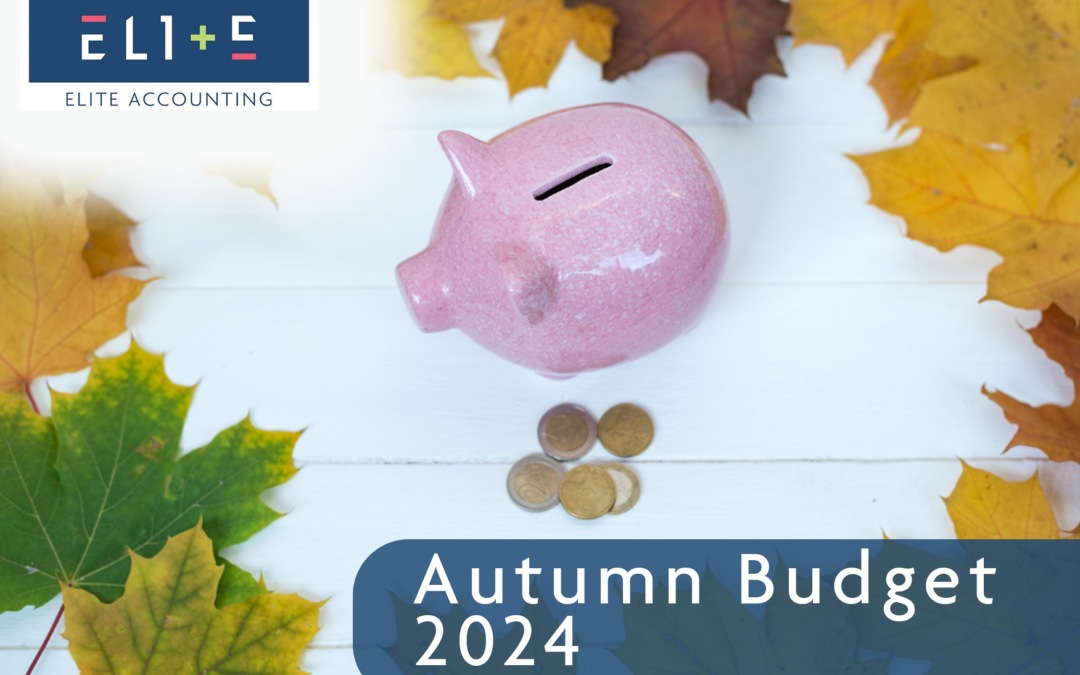The Autumn Budget was announced on 30th October 2024, after extensive speculation surrounded it. The Budget is said to increase taxes by £40bn, which is an additional 3.7% to what was raised in 2023/24 tax year.
Here’s some highlights that we think are pertinent to business, individuals and, most importantly, our clients.
For Businesses
Alcohol Duty
Alcohol duty is being cut on 8.5% draught products from February 2025. It goes down by 11.7%, which is about 1p per average strength pint. This cut is designed to support pubs and smaller brewers.
Alcohol duty on non-draught products will increase in line with the Retail Price Index (RPI) inflation from February 2025 also.
Fuel
One that affects both businesses and individuals – the fuel duty.
The fuel duty will remain frozen, and the temporary 5p a litre cut will continue for another 12 months.
For Employers
Minimum Wage
It has been announced that national minimum wage will increase in April 2025.
| 2024/25 | 2025/26 | % Increase | |
| Apprentice Rate | £6.40 | £7.55 | 18% |
| 16-17 Year Old Rate | £6.40 | £7.55 | 18% |
| 18-20 Year Old Rate | £8.60 | £10.00 | 16.3% |
| 21+ | £11.44 | £12.21 | 6.7% |
Employers National Insurance
Employers National Insurance is the national insurance employers pay on their employees’ salaries. At present the Employers National Insurance Rate is 13.8% on salaries over £9,100.
There are some big changes announced for Employers National Insurance from April 2025.
The first change is that the rate of Employers National Insurance will increase by 1.2% from 13.8% to 15%.
The second change is that the threshold for paying Employers National Insurance on an employee’s salary will drop from £9,100 to £5,000.
To mitigate the impact that this will have on small businesses, the Employment Allowance will increase from £5,000 to £10,500.
The Employment Allowance is an amount of Employers National Insurance that is, essentially, free of charge each year. The eligibility for the Employment Allowance is currently that it’s only available for businesses with an Employers NI bill of less than £100,000 in the previous tax year, however the change sees this eligibility scrapped and allows all businesses the Employment Allowance.
For Landlords
Stamp Duty Land Tax
Effective from 31st October 2024, Stamp Duty Land Tax (SDLT) increases from 3% to 5%.
The increased rate applies to the purchase of second homes, buy-to-let residential properties and companies purchasing residential properties.
The Budget states that it is the government’s assumption that this change will result in 130,000 additional house purchase transactions over the next five years, from first time buyers and those buying their primary residence.
SDLT will remain the same for those purchasing their primary residence, until April 2025.
From 1st April 2025, if you’re purchasing your primary residence, the value that is free from Stamp Duty will reduce from £250,000 to £125,000. Then from £125,000 to £250,000 2% Stamp Duty will apply. Thereafter there is no change to the current Stamp Duty rates.
Furnished Holiday Let Changes
The government previously announced changes to the Furnished Holiday Let (FHL) tax rules – to scrap these from April 2025.
There were musings in the news that the new government wouldn’t scrap the tax regime, however FHLs was not mentioned in the Budget.
This means the plans to scrap the tax allowances from this regime in April 2025 are currently still in place.
For Individuals
Capital Gains Tax (CGT)
Capital gains tax is paid on the gain that arises from the sale of investments, such as residential properties and shares in companies.
Prior to the Autumn Budget, the rate of CGT paid on the gain made from the sale of investments was:
- 10% or 20%, depending on the amount of other earnings an individual has in the tax year, or
- 18% or 24%, on the sale residential properties, depending on the amount of other earnings an individual has in the tax year
The Autumn Budget sees the 10% and 20% tax rates increase to match the rate on the sale of residential properties, therefore the rate of tax will become 18% and 24%, depending on the amount of other income an individual has during the year.
The government state this rate of tax on investments is competitive internationally. However, it is believed that fewer people in the UK invest, compared to other parts of the world, and this could create an additional barrier to investment.
Business Asset Disposal Relief (BADR), formerly known as Entrepreneurs Relief, and Investors’ Relief is set to increase from April 2025 from 10% to 14%, then again in April 2026 to 18%.
Inheritance Tax
Inheritance tax is the tax paid on an individual’s estate following their death. The threshold for inheritance tax is £325,000, meaning estates valued at less than this aren’t subject to inheritance tax. This threshold is said to now be fixed until 2030.
The biggest change, however, is that unspent pensions pots will now fall into your estate for inheritance tax purposes from April 2027.
This change in April 2027 coincides with the government’s investment in digitising inheritance taxation by 2027/28 tax year. They’re investing £52m into this digitisation.
If you own your home, your inheritance tax threshold can increase to £500,000, providing your home is passed on to your children or grandchildren, and your estate is worth less than £2m.
There is normally no inheritance tax if you leave your estate to your spouse or civil partner. You often then benefit from their threshold rolling over and being added to yours, increasing it from £325,000 to £650,000.

